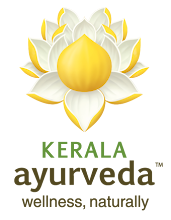So let us begin with what I think is a concise look at Ayurveda:
Ayurveda is the wisdom of life and healthy living. The notion of Veda (knowledge) and Ayu (life) together began over 5,000 years ago. The most ancient Sankhya Philosophy identified the close relationship between man and the universe and realized that therein lies a connection - a cosmic consciousness, an existence rooted in balance and harmony. Ayurveda is the practice of reaching balance and harmony within the individual and is referred to as “the Mother of healing sciences.”
The Body, Mind and Spirit Connection
Ayurveda looks at the human being not as a physical being, but as an interrelated spiral of Body, Mind and Spirit. In balance and harmony, the Body, the Mind and the Spirit equate to pure bliss and true health. The Mind influences the Body, the Body the Mind and inspiring both, the Spirit.
The Human Body – a flow of Energy
The body is not a stationary physical structure, as conventional medicine textbooks want you to believe. Rather, the body is a perpetual flow of natural energy. Ayurveda views this energy of life, commonly referred to as
Prana or Chi, as central to our being and as key to our existence. In addition to this all-encompassing
Prana, there are three other energies called
Doshas that exist within each human being.
Doshas are the most basic principle of Ayurveda. There are 3 types of
doshas –
Vata, Pitta and
Kapha, and they represent five natural elements - earth, water, fire, air, and ether. The theory of three
Doshas, “
Tri-
dosha Vichar”, is the foundation of Ayurveda. These
Doshas and more importantly, the manner in which they are in harmony with one another, control the physiological and psychological functions of the entire body.
•
Vata controls movement and action.
• Pitta governs digestion and metabolism.
•
Kapha builds tissues and maintains fluid balance.
Body Constitution &
Prakriti – an individual’s unique Blueprint
The three
Doshas are present in all things in nature, including human beings, but in different proportions. Those proportions combine to make up each individual’s Body Constitution, or Body Type or
Prakriti. This unique Body Constitution determines that individual’s personality, mental and physical makeup (looks), likes and dislikes and many other things. Each individual is born with it and it cannot be changed. Body Constitution is analogous to modern day
genetical makeup.
When any one of these three
Doshas go out-of-balance (usually an excess of one), disease results. Ayurveda restores the original balance through diet, lifestyle and herbs. Yoga, for example, is a very useful lifestyle tool in establishing and maintaining this balance.
Vata, Pitta,
Kapha personality characteristics:
Vata people are slim and slender, very energetic, intuitive, and imaginative. They walk fast, talk fast and drive in the fast lanes and tend to “change their mind” often.
Pitta people are generally medium in height, with sharp eyes, sharp nose and sharp tongue. They are very organized in their work, speech, and life. They like sports or politics because “winning is everything” to them. Their slogan is “my way or the highway”.
Kapha people are mostly stout or well built, with rounded features and a sweet and easy going personality. Their slogan is “Don’t worry, be happy”.
Ayurvedic Treatments
Ayurvedic practice emphasizes preventive philosophy as well as therapies. This approach first identifies an Individual’s unique Prakriti and then creates a unique, customized plan for rejuvenation and balance. Each lifestyle recommendation is also customized according to an Individual’s Prakriti.
Basic Ayurvedic treatment involves modification of diet and lifestyle, use of natural herbs (as natural medicines) and a treatment called Panchakarma. Panchakarma is a profound detoxifying therapy. It has demonstrated its merits for generations across the globe and continues to prove itself in modern clinical trials. Studies continue to show that Panchakarma increases energy, mental tranquility and appetite and decreases diastolic blood pressure, blood cholesterol, chronic pain and stress.
Conceptually speaking, conventional medicine treats the symptoms while Ayurveda treats the cause. Ayurveda believes that if the cause is not removed, the symptoms will recur. While conventional medicine believes in “one size fits all”, Ayurveda believed that each individual needs to be treated differently according that individual’s unique Prakriti. This is a huge difference in the approach between how an individual is treated.
Ayurvedic Herbs
Herbs are fundamental to medicinal Ayurvedic practice. Long before the arrival of pharmaceutical drugs,
people lived long, healthy lives just using herbs for centuries. During these times, people relied on medicinal herbs for the prevention and treatment of disease. Case in point - 25% of current pharmaceuticals originate from natural herbs. Ayurvedic herbs continually test very successfully in modern scientific research labs as being medicinally potent. Here are a few examples of medicinal herbs and their benefits :
• Turmeric - a natural antibiotic, anti-inflammatory, analgesic, anti-carcinogenic
• Ginger - anti-inflammatory, anti-emetic, a natural digestive
• Kutki – hepato-protective (promotes liver function)
Although it is called a ‘new-age’ science, Ayurveda has been providing a proven perspective on health and healing for 5,000 years. It has been time tested and continues to play an important role even in modern times. Ayurveda embodies the concept of holistic medicine, of treating the whole individual - one’s Body, Mind and Spirit. An Ayurvedic approach to life is one of perpetual health and wellness, of prevention rather than cure.
For more information please log on to:
 I Deserve All that is Good.
I Deserve All that is Good.






